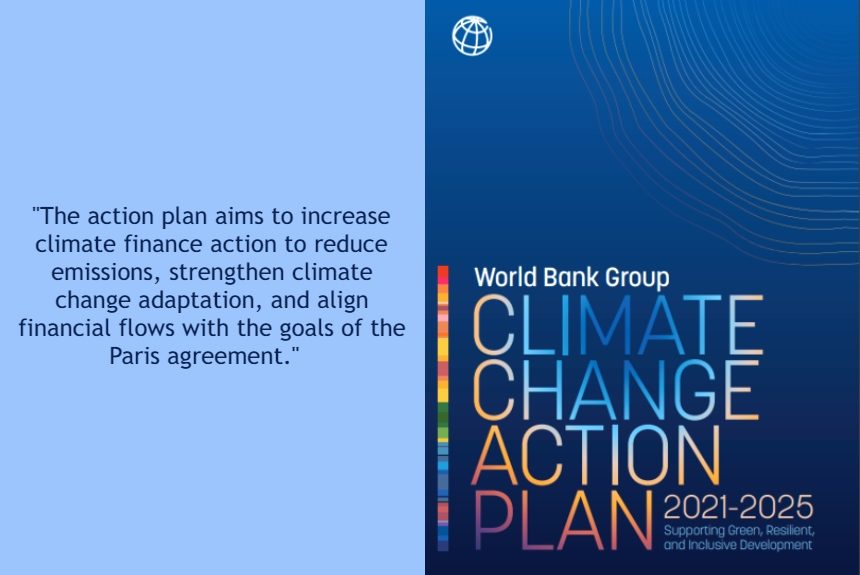The World Bank Group’s climate change action plan sets new targets to guide its work from 2021 to 2025.
“The action plan aims to increase climate finance action to reduce emissions, strengthen climate change adaptation, and align financial flows with the goals of the Paris agreement.”
It will double its five-year investment to around $200 billion to help countries take bold climate actions focusing strongly on climate adaption, leveraging private sector finance, and supporting increased climate action at the country level.
The challenge according to the new plan
Reduce GHGS urgently while meeting the world’s urgent development needs. Developing countries have been eight times more affected by natural disasters in the last decade than in the 1980s.
Trillions of US dollars are required in developing countries annually through 2030 to build infrastructure.
Eight hundred million people around the world still lack access to electricity.
Climate change and the degradation of ecosystems will push our planet closer to irreversible tipping points.
The poorest and most vulnerable countries need climate adaptation and resilience the most.
The climate action plan
The WGB will significantly increase climate finance. The World Bank is already the largest multilateral provider of climate finance for developing countries and has increased financing over the past two years.
It will also advance the World Bank’s green, resilient, and inclusive development (GRID) approach, which pursues poverty elimination and shared prosperity through a sustainability lens.
The action plan will shift from “green” projects to greening entire economies and focusing on inputs to focus on impacts.
Aligning climate and development to facilitate successful mitigation and adaption by introducing a new diagnostic tool – the Country Climate and Development Reports (CCDRs).
This diagnostic tool will inform, prioritise, and sequence climate action in each country. The CCDR will investigate how climate change and decarbonisation may impact a country’s development and priorities and support the preparation and implementation of client countries’ NDCs and long-term Strategies (LTSs).
The WBG will align its financial flow with the objectives of the Paris Agreement. It defines alignment as providing support to clients consistent with low-carbon pathways and climate-resilient development.
Increase climate finance to 35% for the entire WBG over the five years from 2021 to 2025, a significant increase from 26% in FY 2016 to 2020.
Support transformative public and private investments in five key systems: energy, agriculture, cities, transport and manufacturing because combined.
The five key systems combined contribute to 90% of global GHG emissions. Support for adaptation will also be crucial for these systems as they face immense adaptation challenges.
The new climate change action plan was developed against the backdrop of the global pandemic, which has significantly impacted the world economy at a speed and scale not seen in decades.
A window of opportunity must be seized to transition to a low-carbon and resilient pathway.
The new diagnostic tools can help countries identify the high-impact adaptation and mitigation opportunities that will support better NDCs and LTSs.
WBG’s goal is to boost finance to integrate climate and development, supporting a just transition that delivers the best results for all WBG client countries.
Click the button below to read the whole document:
Source Citation:
Word Bank Group Climate Change Action Plan 2021 – 2025: Supporting Green, Resilient, and Inclusive Development. World Bank Group. Retrieved from https://openknowledge.worldbank.org/handle/10986/35799
Climate Change Action Plan (2021 – 2025) Infographic. (2021, June 22). The World Bank. Retrieved from https://www.worldbank.org/en/news/infographic/2021/06/22/climate-change-action-plan-2021-2025



Leave a Reply